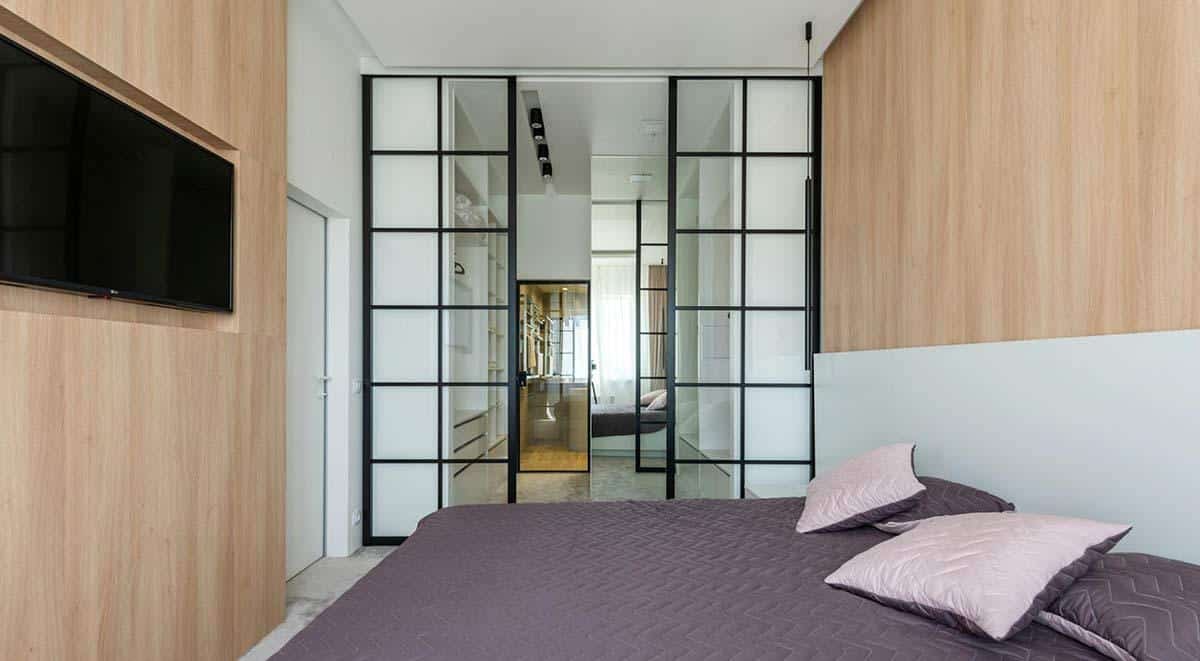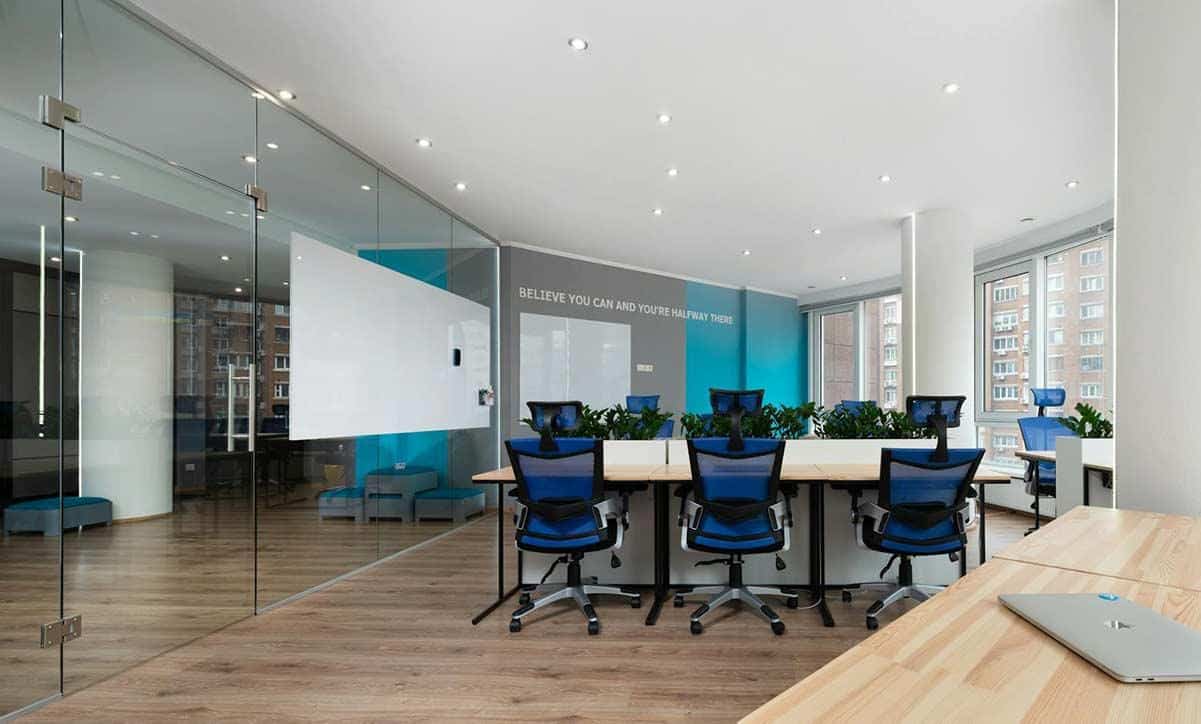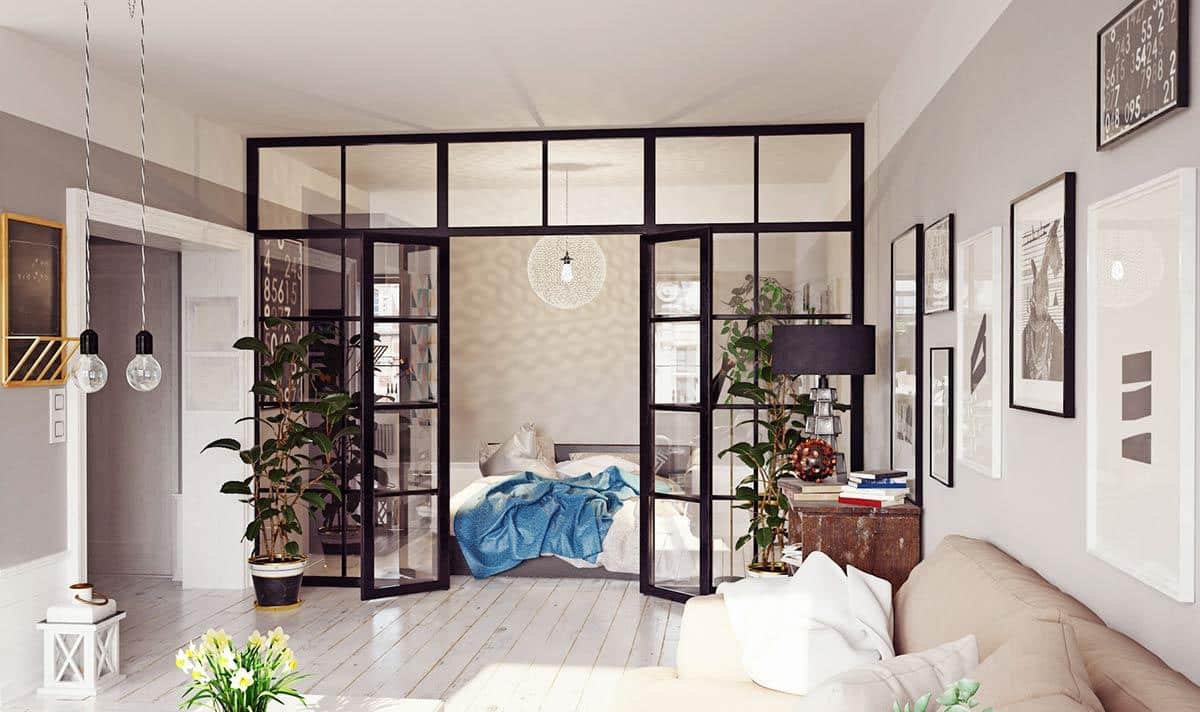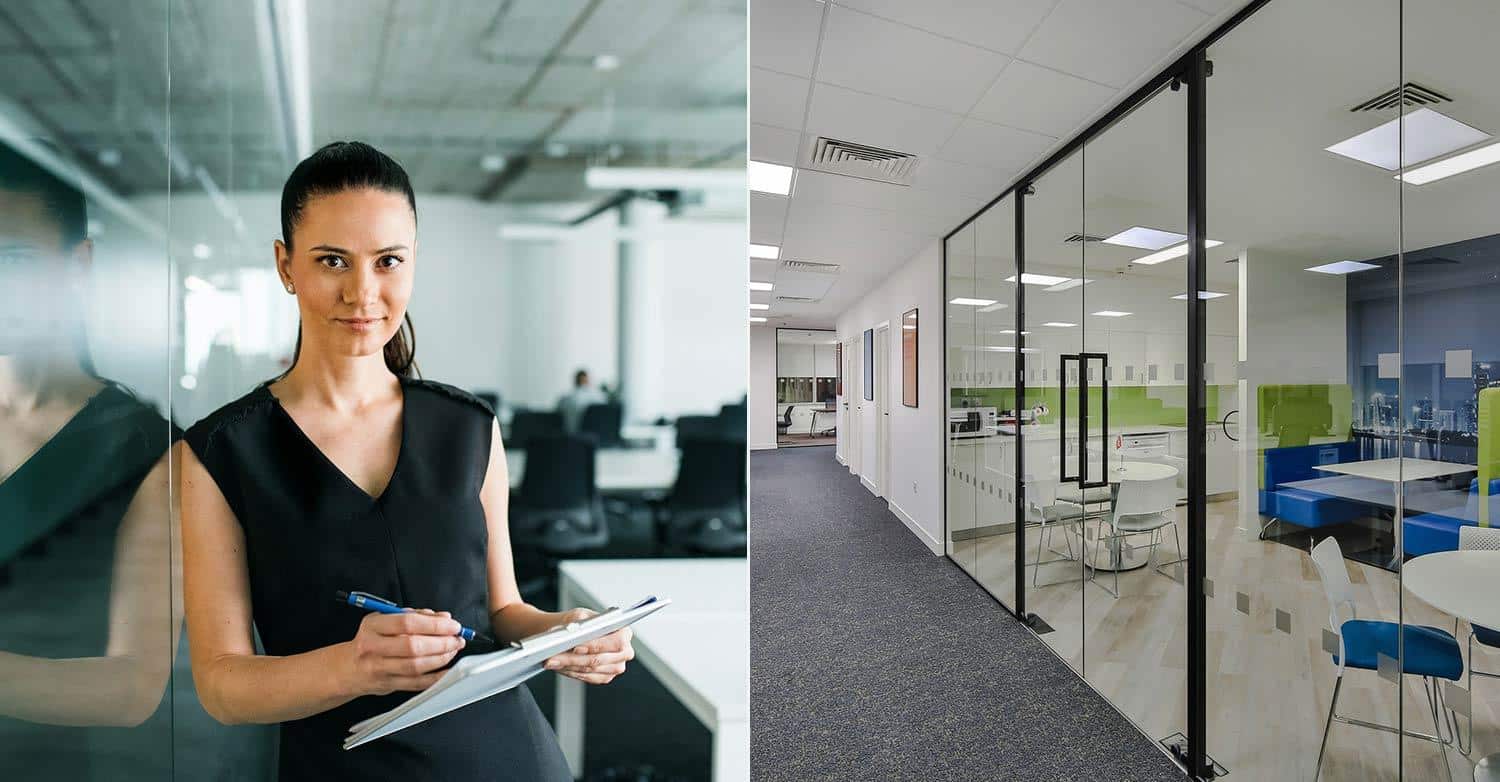Glass as A Building Material Has Evolved in The Last Two Decades
Over the last decade, the use of glass in architecture and construction has seen remarkable advancements. Driven by innovations in technology and evolving design trends, glass has become a cornerstone in modern building practices.
The perfection of the float glass process, which involves floating molten glass on a bed of molten tin, has been instrumental in producing large, uniform, and distortion-free glass sheets. This development has enabled architects and builders to use larger panes, enhancing both the aesthetic and functional aspects of modern structures.
Technological Advancements in Glass
One of the most significant technological advancements in glass is the development of low-emissivity (Low-E) coatings. These coatings enhance the thermal efficiency of buildings by reducing heat transfer, reflecting heat back into the building during winter, and keeping it out during summer.
This innovation supports sustainable building practices and helps meet stringent energy efficiency standards, ultimately reducing reliance on artificial heating and cooling systems.
Laminated and tempered glass technologies have also evolved, offering improved safety and durability. Laminated glass, which consists of multiple layers bonded with a plastic interlayer, provides enhanced security and sound insulation.
It is particularly effective in preventing shattering upon impact, making it ideal for high-security applications. Tempered glass, on the other hand, is heat-treated to increase its strength and, when broken, shatters into small, less dangerous pieces, reducing the risk of injury.
Smart glass technologies, such as electrochromic and photochromic glass, offer dynamic control over light and heat entering buildings.
These smart glasses can change their properties based on electrical signals or sunlight exposure, providing adjustable privacy and energy savings. Increasingly, these technologies are being integrated into high-performance building designs, combining functionality with aesthetic appeal.
Aesthetic and Functional Trends in Glass Design
Contemporary architecture places a strong emphasis on seamless indoor-outdoor integration. Large, floor-to-ceiling glass walls and sliding glass doors are popular choices, offering unobstructed views and fostering a connection with nature. This trend is especially evident in office spaces and luxury residential buildings, where designers aim to create open and inviting environments. Read more: https://glasvagg.com/.
The minimalist design aesthetic, characterized by clean lines and open spaces, has driven the increased use of glass. Frameless glass partitions and structural glass façades contribute to a sleek, modern look that is highly sought after in both commercial and residential projects. These elements not only enhance the visual appeal of a space but also create a sense of openness and fluidity.
Customizable glass options, such as colored, frosted, and patterned glass, allow architects and designers to tailor their designs to reflect the identity and branding of organizations. This customization is particularly useful in creating distinctive office environments that enhance corporate image and employee experience. For instance, frosted glass can provide privacy while still allowing light to penetrate, and colored glass can add unique aesthetic elements to a building’s design.
Real-World Applications of Glass Solutions
Case studies illustrate the practical benefits of modern glass technologies. Companies like Apple and Google have extensively used glass in their headquarters to create transparent, collaborative, and aesthetically pleasing work environments. Apple’s Apple Park, with its curved glass panels, exemplifies how these technologies can create iconic architectural landmarks that also foster productivity.
High-end retail stores often use large glass fronts to create inviting, light-filled spaces that attract customers. This use of glass not only enhances visual appeal but also allows for dynamic displays and merchandising, making the shopping experience more engaging.
Museums and cultural institutions, such as the Louvre Pyramid in Paris and the National Gallery of Victoria in Melbourne, have used glass extensively to create structures that are both functional and visually striking. These buildings showcase the versatility of glass in creating open, light-filled, and engaging spaces for visitors, blending form and function innovatively.
This overview of the past two decades highlights the rapid evolution of glass as a building material, driven by technological advancements and changing architectural trends. These developments have enhanced the functional performance of buildings and contributed to creating aesthetically compelling and sustainable environments.

What Are the Types of Glass Partitions?
In recent years, advancements in glass technology have led to the development of various types of glass walls, each designed to meet specific needs in terms of safety, energy efficiency, and aesthetics. Here are some of the most significant types:
Tempered Glass
Tempered glass is a type of safety glass that is produced through a process of extreme heating and rapid cooling. This process increases the strength of the glass compared to standard annealed glass. The primary advantage of tempered glass is its ability to break into small, less dangerous pieces rather than sharp shards when shattered. This makes it an ideal choice for environments where safety is a major concern, such as in doors, shower enclosures, and office partitions.
The production process involves heating the glass to over 600 degrees Celsius and then rapidly cooling it with jets of air. This method induces compressive stresses on the surface and tensile stresses in the interior, making the glass much stronger and more resistant to impact. Additionally, tempered glass can withstand higher thermal loads, making it suitable for buildings in extreme climates. What is glass made of? Read here: https://industrifakta.com/vad-ar-glas-gjort-av/
Laminated Glass
Laminated glass consists of two or more layers of glass bonded together with an interlayer, typically made of polyvinyl butyral (PVB) or ethylene-vinyl acetate (EVA). The interlayer holds the glass layers together even when broken, providing enhanced security and sound insulation. Laminated glass is commonly used in applications where both safety and noise reduction are important, such as in skylights, facades, and sound barriers.
The interlayer in laminated glass also provides additional benefits, such as UV protection by filtering out harmful ultraviolet rays, which can help in preserving interior furnishings and reducing the risk of skin cancer. Moreover, laminated glass is highly effective in reducing noise pollution, making it an excellent choice for buildings located in noisy urban areas or near airports and highways.
Low-Emissivity (Low-E) Glass
Low-emissivity glass is designed to improve the energy efficiency of buildings. It has a microscopically thin coating that reflects infrared energy (heat) while allowing visible light to pass through. This helps to keep buildings warmer in the winter and cooler in the summer, reducing the need for artificial heating and cooling and thus lowering energy costs.
Low-E coatings are typically applied to one or more of the glass surfaces in an insulating glass unit (IGU). These coatings can be soft-coated or hard-coated, with soft-coated Low-E glass generally offering better performance. The use of Low-E glass is essential in meeting modern building codes and energy efficiency standards, and it is a staple in sustainable building design.
Tinted and Reflective Glass
Tinted glass is made by adding metal oxides during the manufacturing process, which gives the glass a color and reduces glare and solar heat gain. Reflective glass, on the other hand, has a metallic coating that reflects a portion of the incoming solar radiation, thus reducing heat gain and glare while maintaining visibility from the inside out. Both types are used to enhance the aesthetic appeal of buildings and improve comfort by controlling light and heat transmission.
Tinted and reflective glasses are commonly used in facades and windows of commercial buildings. They help in reducing cooling loads, thereby contributing to energy savings. Additionally, these glasses can enhance privacy without the need for additional window treatments.
Patterned and Frosted Glass
Patterned and frosted glass are primarily used for decorative purposes and to provide privacy while still allowing light to penetrate. Patterned glass is produced by passing the glass through rollers with patterns on them, creating a textured surface. Frosted glass, achieved through sandblasting or acid etching, has a smooth, matte finish that diffuses light and obscures visibility.
These types of glass are often used in interior applications such as office partitions, bathroom windows, and decorative features. They provide a balance between privacy and natural light, making them suitable for spaces where both are needed.

Benefits of Glass Walls in Office Environments
Glass Walls Allows for Natural Light
One of the primary benefits of glass walls in office environments is the significant increase in natural light. Studies have shown that access to natural light can improve employee well-being, productivity, and mood.
Natural light reduces the need for artificial lighting, thus lowering energy costs and creating a more sustainable office environment. Additionally, natural light can enhance the overall aesthetic of the workspace, making it feel more open and inviting.
Glass Partitions Enables Transparency and Collaboration
Glass walls promote transparency within the office, fostering a culture of openness and collaboration. By eliminating physical barriers, glass walls encourage communication and interaction among employees. This can lead to increased teamwork and a stronger sense of community.
Moreover, the visibility provided by glass walls can help in creating a more accountable and trustful work environment, as employees can see and be seen, leading to a more cohesive team dynamic.
Aesthetic Appeal
Glass walls add a modern, sophisticated touch to any office space. Their sleek design blends well with various architectural styles, from contemporary to traditional. Customizable options like frosted, tinted, or patterned glass allow for unique designs that reflect a company’s brand identity. This aesthetic appeal can make a positive impression on clients and visitors, enhancing the professional image of the organization.
Acoustic Privacy
Despite Their Transparency, Glass Walls Can Provide Effective Acoustic Privacy. Double-Glazed or Laminated Glass Options Reduce Noise Transmission, Creating Quiet and Private Spaces for Meetings and Focused Work. Acoustic Treatments Can Further Enhance Soundproofing, Ensuring Confidential Discussions Remain Private While Benefiting from The Openness and Light Provided by Glass Walls.
Flexibility and Adaptability
Modular Glass Wall Systems Offer Unparalleled Flexibility and Adaptability in Office Design. They Can Be Easily Reconfigured to Accommodate Changing Needs, Such as Expanding Teams or Creating New Meeting Spaces.
This Adaptability Allows Businesses to Optimize Their Workspace without Extensive Renovations, Saving Both Time and Money. Additionally, Glass Walls Can Be Integrated with Other Office Systems, Such as Hvac and Lighting, Creating a Cohesive and Efficient Work Environment. Read More: Https://www.Advisoryexcellence.Com/7-Benefits-Of-Glass-Walls-In-The-Office/
Recommendations for Glass Wall Systems in Modern Offices
For Modern Office Environments, Glass Wall Systems Should Prioritize Aspects Like Natural Lighting, Transparency, Collaboration, and Flexibility. Here Are Some Specific Recommendations:
Frameless Glass Wall Systems
These Systems Offer a Sleek, Minimalist Look without Visible Frames, Providing a Continuous Glass Surface that Maximizes Light Transmission and Offers an Unobstructed View. Benefits Include Enhanced Natural Light, a Modern Aesthetic, and A Sense of Openness and Transparency. Price Range: $80 – $150 per Square Foot, Including Installation.
Modular Glass Partition Systems
These Systems Consist of Pre-Fabricated Glass Panels that Can Be Easily Installed, Reconfigured, or Moved, Often with Features Like Integrated Blinds or Frosted Sections for Privacy. Benefits Include Flexibility, Quick Installation, and Cost-Effectiveness for Dynamic Environments. Price Range: $100 – $200 per Square Foot, Depending on Customization and Features.
Switchable Privacy Glass Systems (smart Glass)
Using Electrochromic Technology, These Systems Switch Between Clear and Opaque States, Providing Privacy on Demand without Blinds or Curtains. Benefits Include Instant Privacy Control, a High-Tech Appearance, and Energy Efficiency. Price Range: $150 – $300 per Square Foot Due to Advanced Technology.
Double-Glazed Acoustic Glass Systems
These Systems Use Double-Glazed Panels to Enhance Sound Insulation, Making Them Ideal for Offices Requiring Noise Reduction, Such as Conference Rooms and Executive Offices. Benefits Include Superior Acoustic Performance, Thermal Insulation, and Increased Comfort. Price Range: $120 – $250 per Square Foot.
Benefits of Glass Walls in Industrial Environments
Safety Enhancements
in Industrial Settings, Glass Walls Enhance Safety by Providing Clear Visibility Across Work Areas. This Transparency Allows for Better Supervision and Monitoring of Operations, Enabling Quick Responses to Issues or Emergencies.
Glass Walls Can Also Separate Hazardous Areas from Safe Zones While Maintaining Visual Contact, Ensuring Employees Are Aware of Ongoing Activities and Potential Risks. This Setup Is Particularly Beneficial in Environments with Heavy Machinery, Allowing Constant Monitoring without Compromising Safety.
Noise Reduction
industrial Environments Are Often Noisy, and Glass Walls Can Help Mitigate This Issue by Providing Sound Barriers. Laminated and Double-Glazed Glass Options Effectively Reduce Noise Levels, Creating Quieter and More Conducive Working Conditions.
This Capability Improves Worker Comfort and Concentration and Complies with Occupational Health and Safety Regulations Regarding Permissible Noise Levels.
Chemical and Corrosion Resistance
special Coatings and Treatments Make Glass Walls Highly Resistant to Chemicals and Corrosion, Making Them Suitable for Harsh Industrial Environments.
These Coatings Protect the Glass from Exposure to Acids, Alkalis, and Other Corrosive Substances, Ensuring Longevity and Durability. This Resistance Is Particularly Useful in Industries Such as Pharmaceuticals and Chemical Manufacturing, Where Exposure to Harsh Substances Is Common.
Recommendations for Glass Wall Systems in Industrial Environments
In Industrial Settings, Glass Wall Systems Should Focus on Safety, Durability, and Functionality. Here Are Some Tailored Recommendations:
Safety Glass Wall Systems
These Systems Use Laminated or Tempered Glass to Provide Robust Safety Features. They Are Designed to Withstand Impact and Prevent Shattering Into Sharp Pieces. Benefits Include Enhanced Safety, Visibility for Supervision, and Compliance with Industrial Safety Standards. Price Range: $90 – $180 per Square Foot.
Chemical-Resistant Glass Wall Systems
Glass Walls Treated with Special Coatings to Resist Chemical Corrosion and Staining Are Ideal for Environments Where Exposure to Harsh Chemicals Is Common. Benefits Include Long-Lasting Durability, Maintaining Clarity and Integrity Despite Chemical Exposure, and Ease of Cleaning. Price Range: $120 – $250 per Square Foot, Depending on The Type of Chemical Resistance Required.
Soundproof Glass Wall Systems
Double-Glazed or Laminated Glass Systems Designed to Reduce Noise Transmission, Making Them Suitable for Noisy Industrial Environments. Benefits Include Improved Worker Comfort and Concentration, Compliance with Noise Regulations, and Enhanced Communication Within the Facility. Price Range: $130 – $260 per Square Foot.
Fire-Rated Glass Wall Systems
These Systems Use Special Fire-Resistant Glass to Provide Protection Against Fire and Smoke, Ensuring Safety in Industrial Environments. Benefits Include High Fire Safety Standards, Maintaining Integrity Under High Temperatures, and Providing Clear Visibility in Emergency Situations. Price Range: $150 – $300 per Square Foot.

What Type of Glass Partition Walls Is Recommended in Residential Environments?
For Residential Environments, Glass Wall Systems Should Enhance Aesthetic Appeal, Natural Lighting, and Functionality While Maintaining Privacy and Security. Here Are Some Specific Recommendations:
Frameless Glass Wall Systems
These Systems Offer a Minimalist Look that Integrates Seamlessly Into Modern Home Designs, Providing Unobstructed Views and Maximizing Natural Light. Benefits Include Enhancing Natural Light, Promoting a Modern Aesthetic, and Supporting Open-Plan Living. Price Range: $80 – $150 per Square Foot, Including Installation.
Sliding Glass Door Systems
Ideal for Connecting Indoor and Outdoor Spaces, Such as Patios, Balconies, and Gardens. These Systems Can Be Frameless or Framed, Depending on The Design Preference. Benefits Include Seamless Indoor-Outdoor Integration, Space-Saving, and Easy Access to Outdoor Areas. Price Range: $100 – $250 per Square Foot.
Frosted or Patterned Glass Wall Systems
Used to Provide Privacy in Areas Such as Bathrooms and Bedrooms While Still Allowing Light to Filter Through. These Systems Can Be Customized with Various Patterns and Finishes. Benefits Include Privacy, Aesthetic Appeal, and Customizable Designs. Price Range: $70 – $150 per Square Foot.
Smart Glass Systems
Electrochromic Glass that Can Switch Between Clear and Opaque States, Offering Privacy on Demand without The Need for Blinds or Curtains. Ideal for Bedrooms, Bathrooms, and Home Offices. Benefits Include Instant Privacy Control, Modern Appearance, and Energy Efficiency Through Light Control. Price Range: $150 – $300 per Square Foot.
Cost Estimates for Furnishing Different Environments
Furnishing a Small Office (10-20 Employees) with Glass Wall Systems Ranges from $8,000 to $25,000. for Medium Offices (20-50 Employees), Costs Increase to $15,000 to $60,000. Large Offices (50+ Employees) Typically See Costs Between $30,000 and $120,000. Open-Plan Offices and Executive Suites Vary Similarly, with Frameless and Modular Systems Ranging from $20,000 to $70,000, and Higher for Advanced Systems.
Conference Rooms Can Be Fitted with Glass Walls for $5,000 to $20,000, Depending on The Level of Privacy and Acoustic Features Required. Residential Glass Wall Systems Enhance Natural Light and Aesthetic Appeal, with Costs for Frameless Systems at $80 to $150 per Square Foot, Sliding Glass Doors at $100 to $250 per Square Foot, Frosted/patterned Glass at $70 to $150 per Square Foot, and Smart Glass at $150 to $300 per Square Foot.
Finishing Words
Selecting the Appropriate Glass Wall Systems for Offices, Industrial Settings, and Residential Environments Involves Considering Specific Needs Such as Safety, Sound Insulation, Flexibility, and Aesthetic Requirements. While the Initial Investment May Vary, the Long-Term Benefits in Terms of Functionality, Energy Savings, and Occupant Well-Being Make These Glass Wall Systems a Worthwhile Investment.

